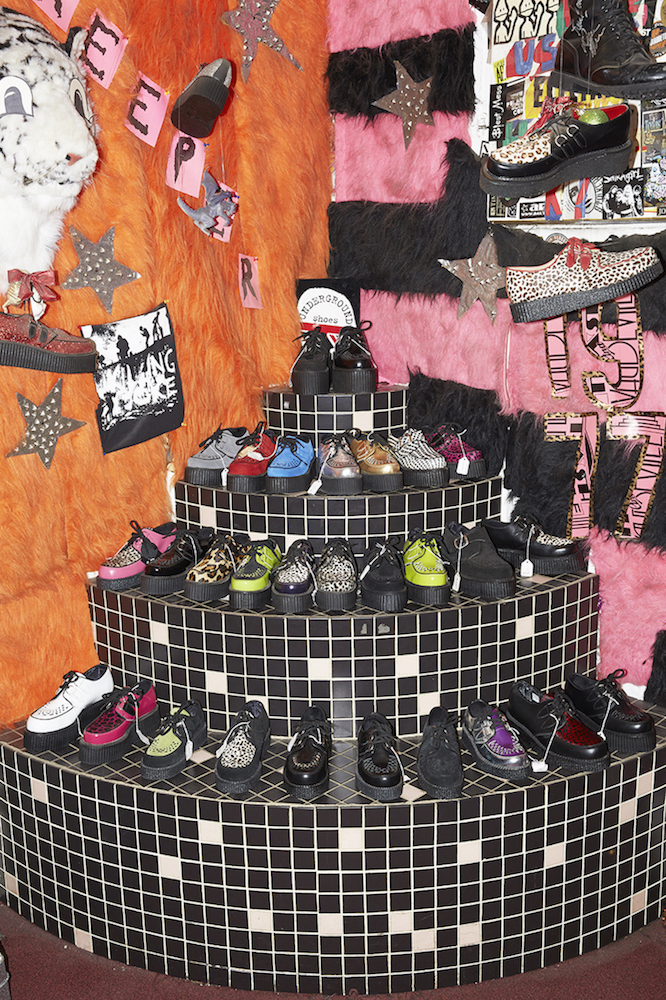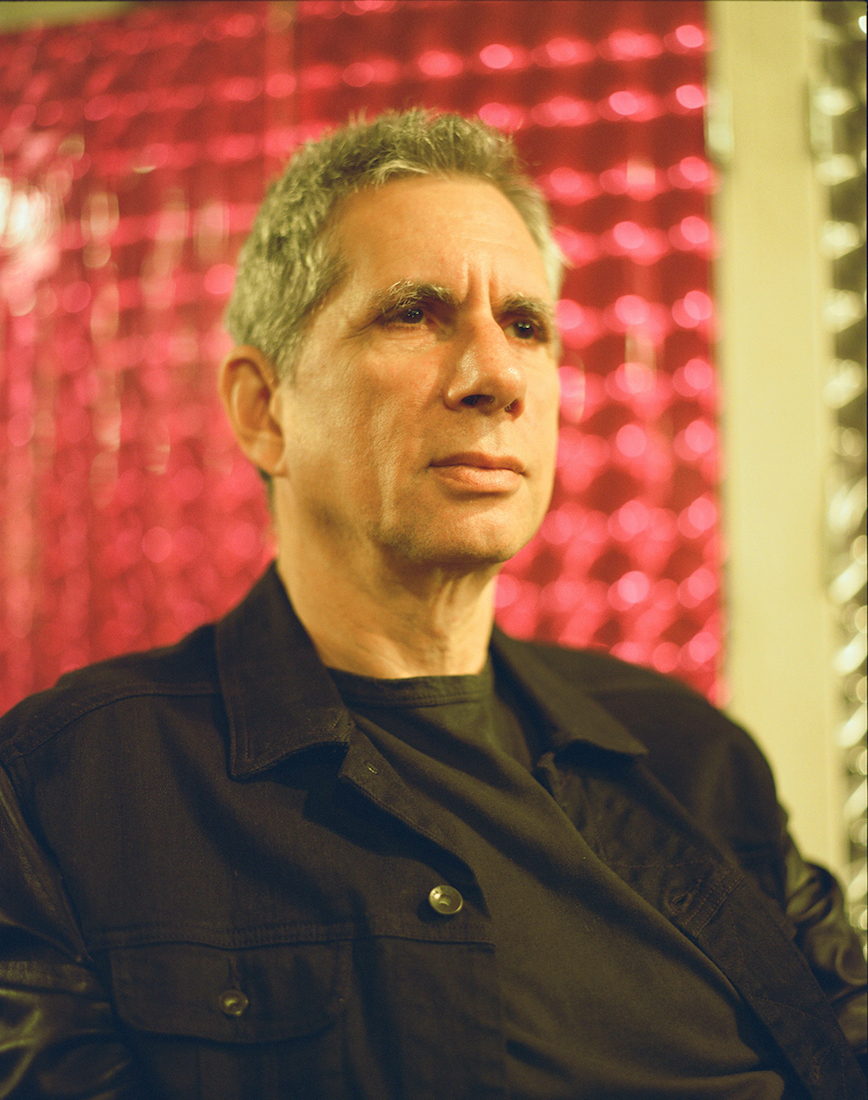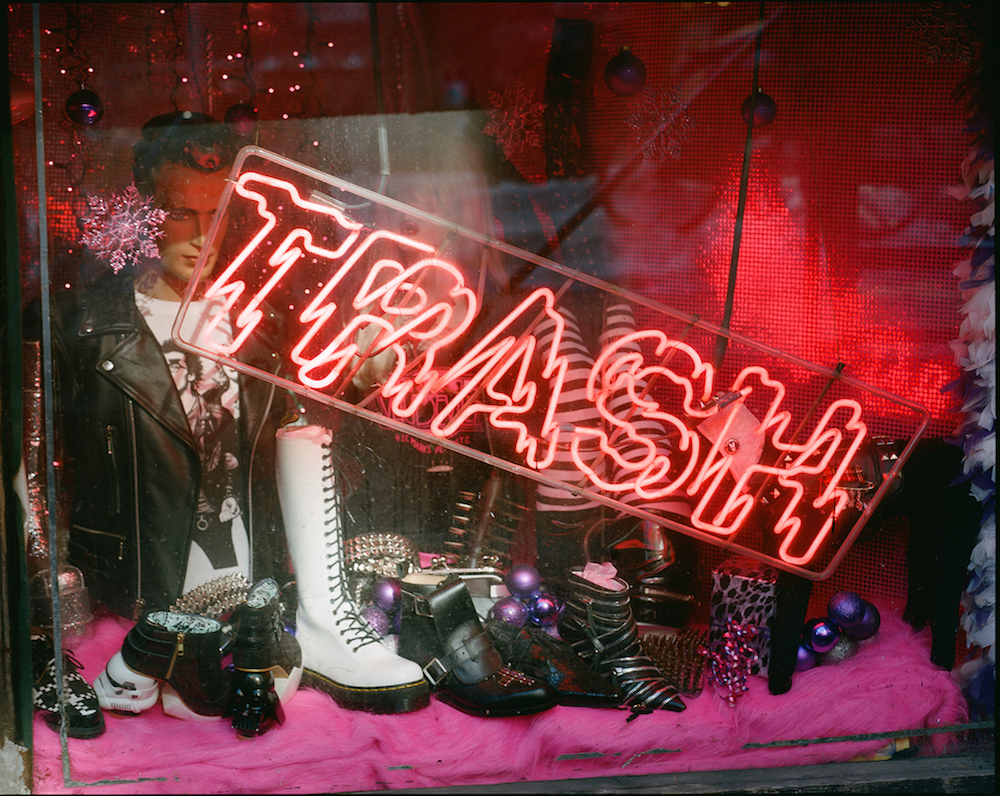St. Mark’s punk playground heyday is officially over. Trash and Vaudeville — the iconic mom and pop clothing store for punk rockers and Liberty-spiked poseurs alike — is leaving 4 St. Mark’s Place after 41 years (probably making room for another coffee shop or Little Tokyo establishment).
Trash and Vaudeville, the last remaining vestige of the East Village’s once-electric punk scene, was the first store in the U.S. to stock i-D when it started out as a fanzine, dedicated to anti-heroes, trailblazers, and punk subculture. In 1975, when punk erupted in New York City, Trash and Vaudeville was the only place selling true rock-and-roll gear. Generations of legendary punk rockers have since browsed the racks for staples like Dr. Martens, motorcycle jackets, bondage pants, and black skinny jeans. During its heyday, you could easily run into Iggy Pop, Blondie, Slash, or one of The Ramones leaving one of the ephemera-plastered fitting rooms.
St. Mark’s will never be the same again, without the shop’s familiar neon glow, and without Jimmy Webb, the store’s manager, standing outside, like a landmark himself, in all of his studded-leather, peroxide-blonde glory. But don’t panic just yet: Trash and Vaudeville is reopening later this month two blocks away, at 96 East 7th Street, on a block boasting a variety of local shops with a vibe reminiscent of St. Mark’s’ earlier days.
We spoke with the store’s owner, Ray Goodman, about Trash and Vaudeville’s past, present, and future, and whether or not punk really is dead.
How would you explain Trash and Vaudeville’s relationship with punk?
Trash and Vaudeville embraced the whole punk scene out of pure love and admiration for the music. I’d like to think that Trash went hand-in-hand with the punk scene. I was the first one to bring the original i-D to the U.S. and the first to carry Dr. Martens in the U.S. — both of which hugely influenced punk in New York and everywhere else. Trash has and will always continue to support punk. Not just people who identify as or look like your typical punk, but everyone who has that attitude and wants to express themselves in a different way — be it through clothing, music, hairstyle, or ideology. We’ll continue that at the new 7th Street location.

Punk was very much about a mentality, how did clothing play into that?
Punk music was a revolution in rock-and-roll, a statement against the mainstream. The sounds were primal, to the point, simplistic, and stripped down — which is what made it so great. The clothing reflected that minimalism. It was an original look, an anti-fashion fashion statement. It didn’t matter if a shirt was too torn or if it was being held together with a safety pin. Punk promoted creativity; you could customize your own jacket or pants by just adding little embellishments or scrawling a statement in paint or marker, to express your views on politics, life, or the world.
What’s the best article of clothing at T&V?
Our black Trash and Vaudeville jean. It’s the first item we ever made and we still make it today with the same fit and style. A favorite of The Ramones, Mick Jones, and Bruce Springsteen.
Who are your style icons?
Vivienne Westwood is one of the true genius punk designers, one of the few that really created and interpreted something new. Other icons include Jimi Hendrix, Cream, and Jefferson Airplane in the 60s. Then all the glitter bands like Slade with their platform shoes. Definitely David Bowie. Bowie was a fashion genius. I liked people that put things together in their own way. The Sex Pistols, The Clash, the simplicity of the Ramones. The Motown scene with their matching suits, so clean and slick. Curtis Mayfield with Superfly; all those early drug guys and pimps had amazing wardrobes. I love their look. Velvet Underground, The Rolling Stones (Mick Jagger in his blouses and white Capezios). The Mods.
Punk movements took place in both New York and London. Can you explain the difference?
The attitude in both cities was punk, but they rebelled and revolted against different cultural phenomena. In terms of style, the British punk bands were making more of a fashion statement with bondage and zipper pants, and loosely knit mohair sweaters with rips and safety pins. New York punk bands — The Ramones, The Dead Boys, Blondie, Iggy Pop, Lou Reed — wore torn Levi’s, t-shirts, and Marlon Brando motorcycle jackets. If you went to go see the Clash in New York, someone might be wearing a Clash T-shirt with jeans, but if you saw the Clash in London, fans might dress up more militaristic, to reinterpret the band’s look.

What are the best punk shows you ever saw?
The Clash in 1981 at Bond International Casino on Broadway. The Clash, Mick Jones, Joe Strummer, and their tour manager Cosmo Vinyl were frequent customers of mine. Mick Jones gave me one of the best compliments when he told me that we have the best black jeans in the world. They set up mannequins at the show and asked me to dress them. So, at their height, I got to see whatever show I wanted. Patti Smith was another key figure. She was breaking barriers and singing songs that made you think about revolting. Her show at The Bottom Line in the late 70s was amazing. The great shows at CBGBs. CBs was the ultimate punk venue, the equivalent to a t-shirt being held together with safety pins, it was held together by god knows what, spit or whatever, but it was great.
What do you think the move will do to the block? How do you think you’ll feel when you pass by the old storefront?
I’m not leaving St. Mark’s completely because I live on the block so I’ll be passing by a lot. I first went to St. Mark’s in 1967 when I was 13 and never left. I remember saying to myself, “I don’t understand exactly what’s going on around here. But whatever it is, it feels good and I want to figure out how I can stay involved in the scene.” There’s a certain energy that to this day still travels through St. Mark’s. I can feel it. But just like music or fashion, it changes. I will be very nostalgic walking by and thinking of all the great memories there. We’ve had punk rockers and their kids and their kids’ kids coming for the past 41 years, so it’s a bit emotional for everyone that we won’t be there anymore. Without Trash, there’s no physical history left of St. Mark’s’ punk rock period.
The original punk movement ended, but what incarnations of it do you see in youth culture today? Is punk dead?
Fashion trends come and go, but from an attitude perspective, I think punk still exists. Punk was just another way to say, “We’re not the status quo.” Punk bands are still forming, with a new, current message they’re trying to get across. It’s not 70s punk, but it all comes down to the same counterculture expression. Whether it’s called punk or something else, as long as there are people who aren’t happy with what’s going on in the world or in their personal lives, some form of a punk movement will always exist.
Credits
Text by Naomi Melati Bishop
Photography Eric Chakeen
